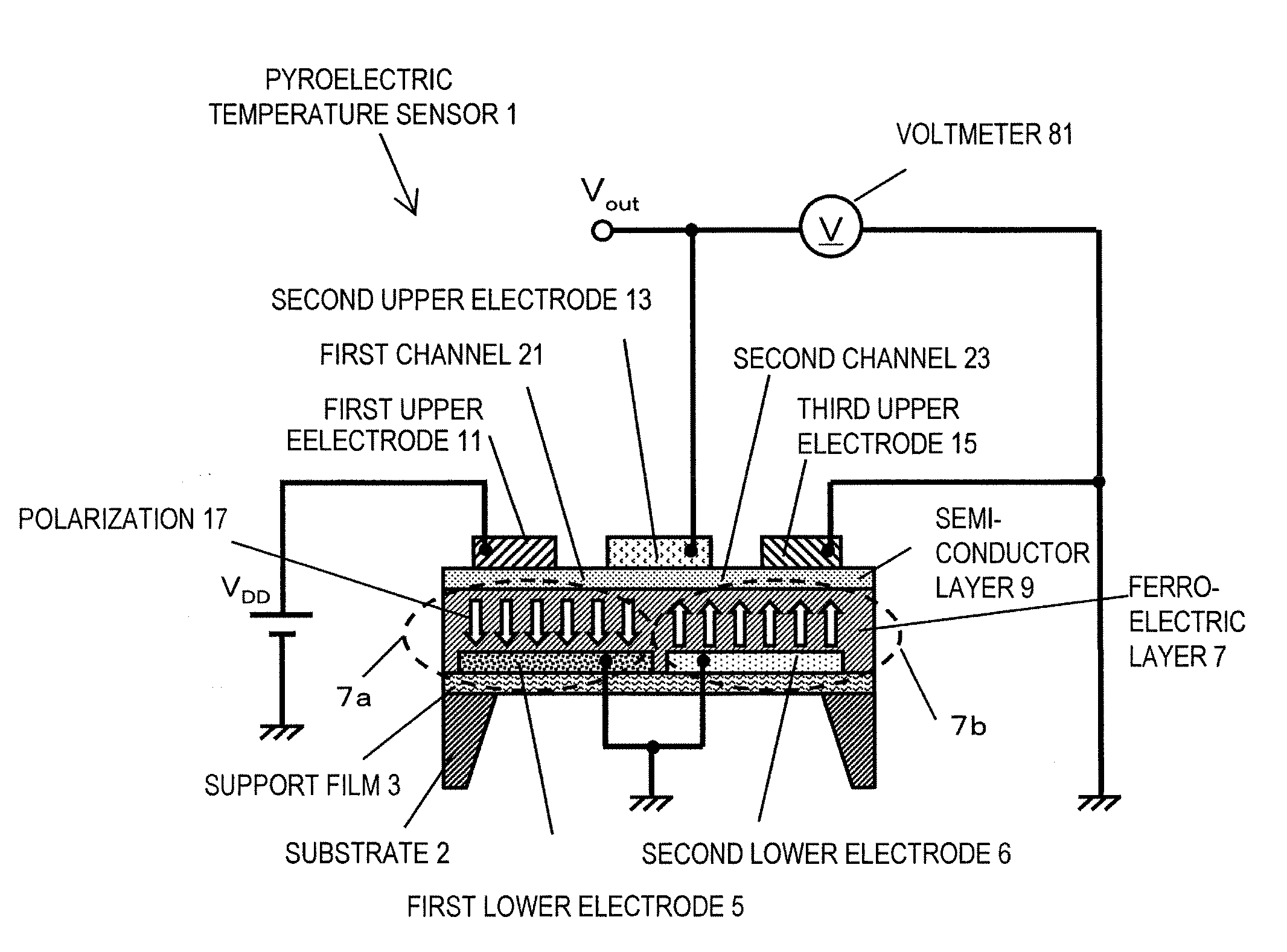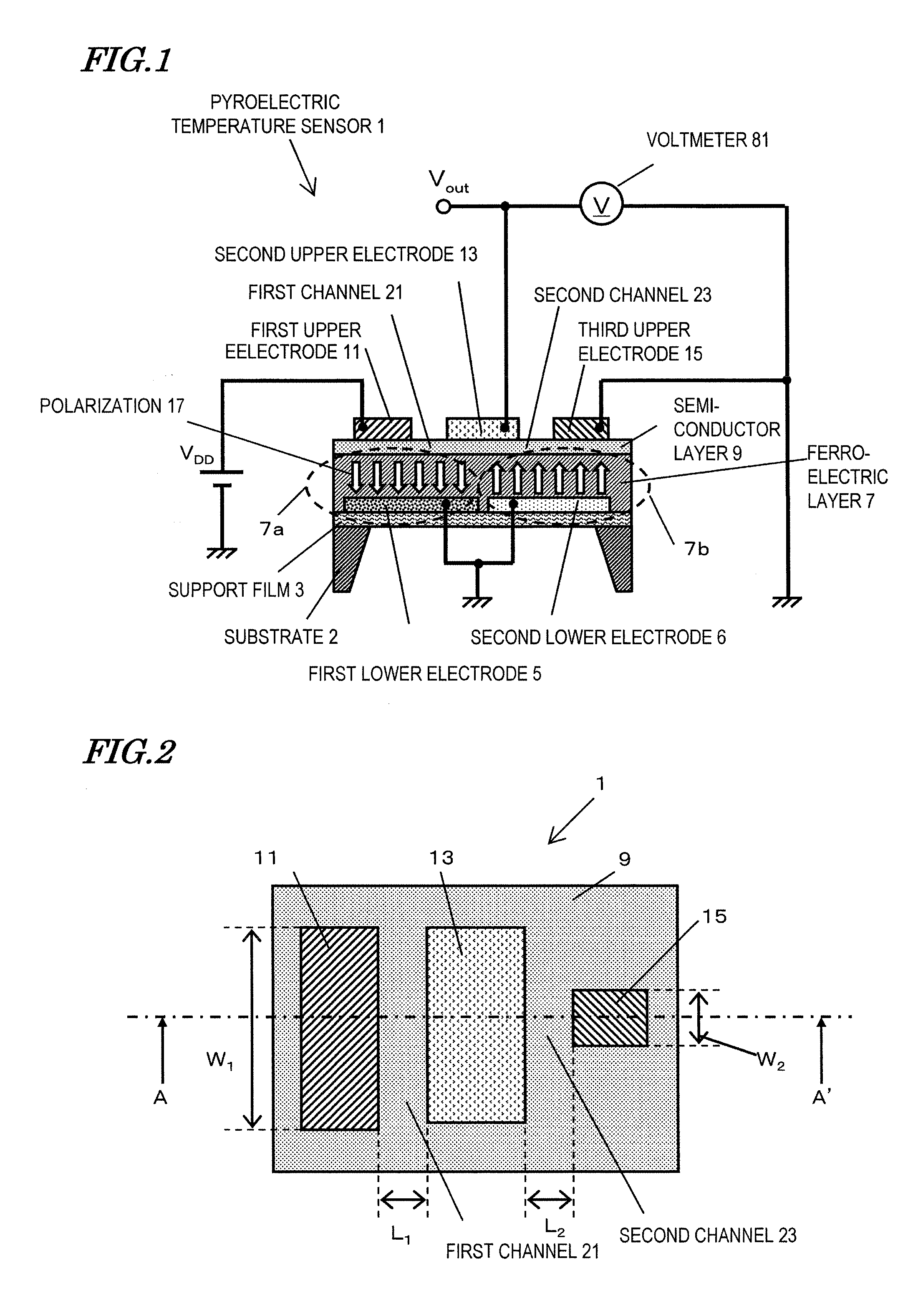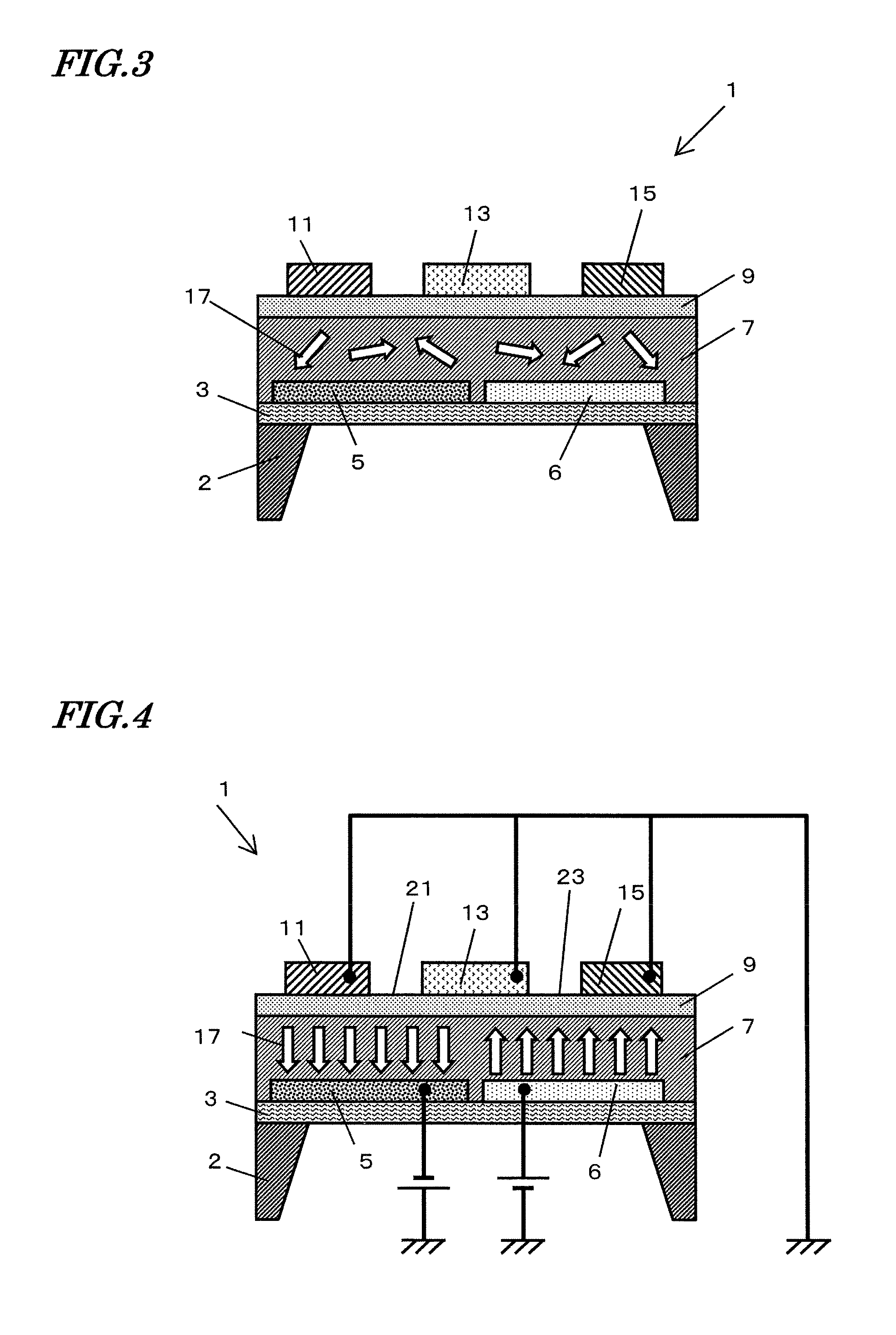Pyroelectric temperature sensor and a method for measuring a temperature with the pyroelectric temperature sensor
a temperature sensor and pyroelectric technology, applied in the direction of instruments, heat measurement, measurement devices, etc., can solve the problems of complex external circuits, inability to obtain an amplification characteristic greater than that of thin film transistors, and inability to detect the amount of drain current, etc., to achieve high sensitivity
- Summary
- Abstract
- Description
- Claims
- Application Information
AI Technical Summary
Benefits of technology
Problems solved by technology
Method used
Image
Examples
embodiment 1
[0053]FIG. 1 shows the pyroelectric temperature sensor 1 according to the embodiment 1.
[0054]As shown in FIG. 1, the present pyroelectric temperature sensor 1 comprises a substrate 2, a support film 3, a lower electrode group 5, 6, a ferroelectric layer 7 as a pyroelectric layer, a semiconductor layer 9, and an upper electrode group 11, 13, 15.
[0055]The lower electrode group 5, 6, the ferroelectric layer 7, the semiconductor layer 9, and the upper electrode group are stacked in this order.
[0056]The lower electrode group comprises a first lower electrode 5 and a second lower electrode 6.
[0057]The upper electrode group comprises a first upper electrode 11, a second upper electrode 13, and a third upper electrode 15.
[0058]The second upper electrode 13 is interposed between the first upper electrode 11 and the third upper electrode 15 in a plan view.
[0059]A first channel 21 is formed in the portion of the semiconductor 9 which is interposed between the first upper electrode 11 and the s...
example 1
[0091]FIG. 6 shows a method of fabricating a pyroelectric temperature sensor.
[0092](a) A SrTiO3 film with a thickness of 150 nm was deposited on a MgO(100) monocrystalline substrate 2 under a temperature of 700 degree Celsius with a pulse laser deposition method (hereinafter “PLD process”) to form a support film 3.
[0093]After the temperature of the substrate 2 was set to be 400 degree Celsius, a platinum film with a thickness of 200 nm was deposited with the PLD process. A resist (not shown) was applied and patterned to form an etching mask. The platinum film was etched with reactive ion etching process using CF4 gas. Subsequently, as shown in FIG. 6A, the first lower electrode 5 and the second lower electrode 6 were formed.
[0094](b) After the temperature of the substrate 2 was set to be 600 degree Celsius, a PLT film of a thickness of 500 nm was deposited with the PLD process. Thus, as shown in FIG. 6B, the ferroelectric layer 7 was deposited. The ratio of Pb to La in the(Pb,La)TiO...
example 2
[0103]FIG. 9 shows a graph in which the horizontal axis represents the channel size ratio α, and the vertical axis represents the output voltage change. The output change is defined as the output voltage change of the pyroelectric temperature sensor when the temperature increased from 20 degree Celsius to 80 degree Celsius. As shown in FIG. 9, when the polarization direction of the first ferroelectric part is substantially downward from the semiconductor layer to the lower electrode group, the output voltage change becomes greater in accordance with the increase of α. Since the lower detection limit of the voltage change was 0.1 mV, detectable output voltage change is obtained when the value of α is not less than 30. Preferably, the value of α is not less than 300 since the output voltage change of not less than 1 mV is obtained.
PUM
 Login to View More
Login to View More Abstract
Description
Claims
Application Information
 Login to View More
Login to View More - R&D
- Intellectual Property
- Life Sciences
- Materials
- Tech Scout
- Unparalleled Data Quality
- Higher Quality Content
- 60% Fewer Hallucinations
Browse by: Latest US Patents, China's latest patents, Technical Efficacy Thesaurus, Application Domain, Technology Topic, Popular Technical Reports.
© 2025 PatSnap. All rights reserved.Legal|Privacy policy|Modern Slavery Act Transparency Statement|Sitemap|About US| Contact US: help@patsnap.com



